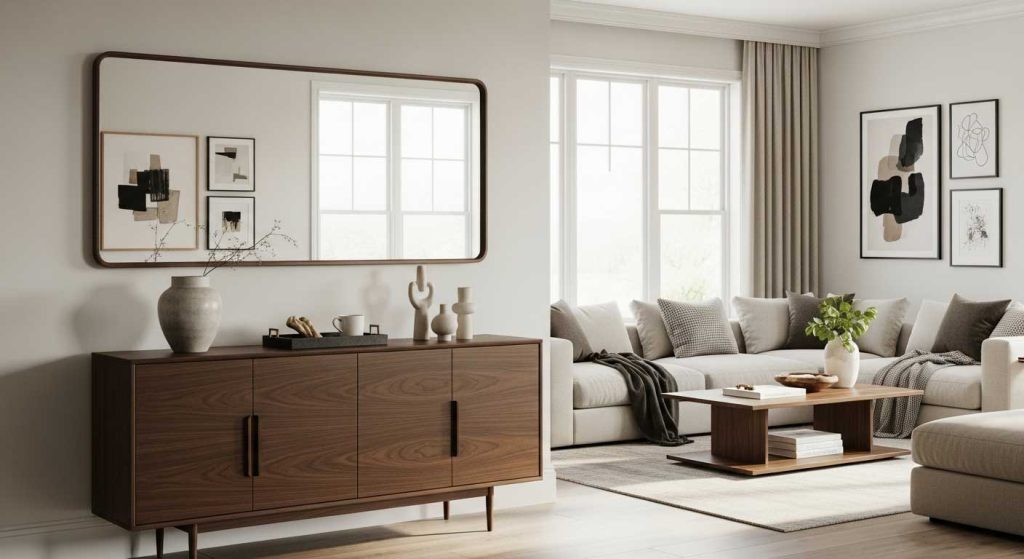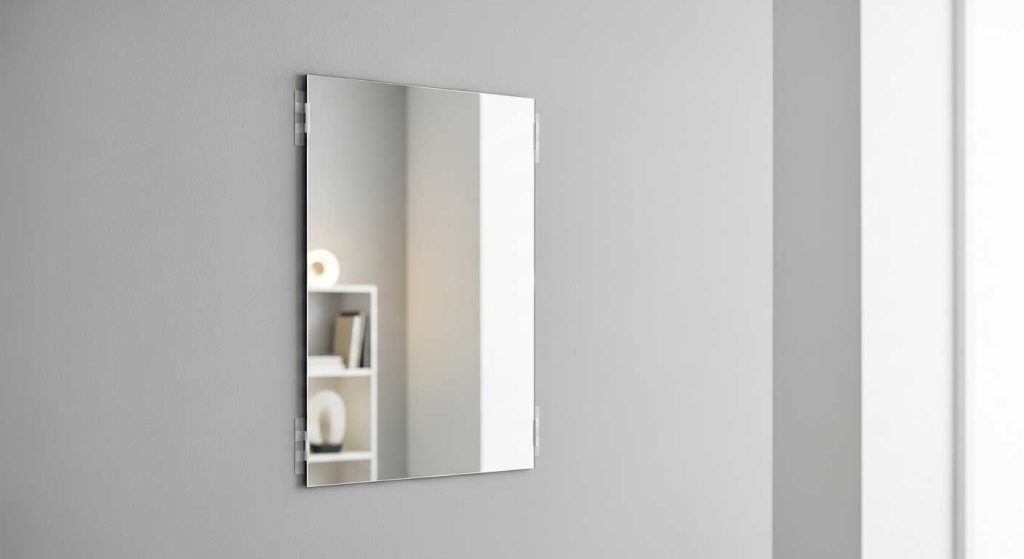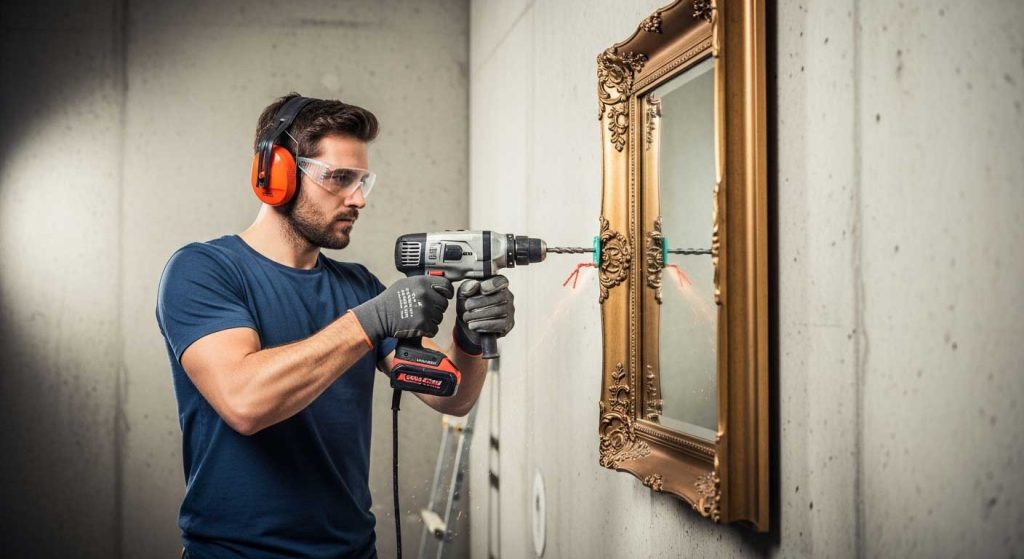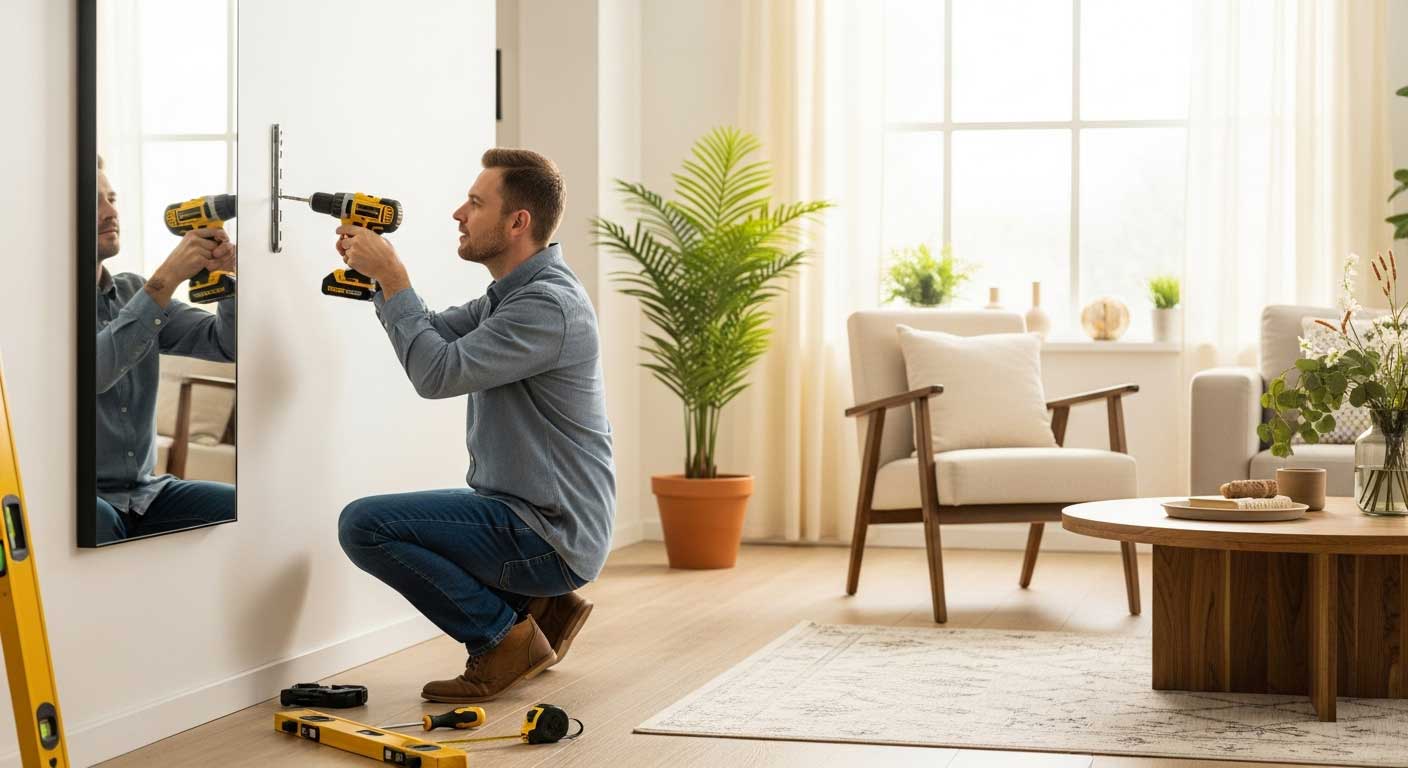Mirrors are not just for checking your reflection—they’re powerful décor tools. A well-placed wall mirror can brighten a room, make a space feel bigger, and add a touch of elegance. But figuring out how to hang a mirror on the wall without damaging it can be a little tricky—especially when it’s large, heavy, or you’re dealing with unique surfaces like plaster, tile, or concrete.
Whether you’re mounting a full-length hanging wall mirror, a wall hanging makeup mirror, or a heavy decorative mirror, this guide walks you through how to hang a wall mirror like a pro—no cracks, crooked lines, or costly mistakes.
1. Choose the Right Spot for Your Mirror

Before we dive into how to hang a mirror on a wall without nails, it’s crucial to choose the perfect location. A mirror isn’t just decorative—it reflects light, enhances space, and adds style.
Pro Placement Tips:
- Living Room: Above a sofa or console table
- Bedroom: Opposite a window or behind a door
- Bathroom: Above a sink or vanity
- Entryway: Near the door to expand and brighten the space
- Makeup Area: Use a lighted wall-hanging makeup mirror
Mirrors opposite windows amplify natural light, making even the smallest room feel open and airy.
2. Measure and Mark Carefully
Even when figuring out how to hang a mirror on a wall without nails, measuring accurately is essential.
Steps:
- Measure your mirror’s width and height.
- Use painter’s tape to outline the mirror’s shape on the wall.
- Use a level to avoid a crooked install.
- Lightly mark your final placement with a pencil.
Tip: For full-length mirrors, the bottom should be about 10–12 inches off the floor.
3. Know Your Wall Type
Understanding your wall type helps you choose the safest and most effective nail-free mounting method.
Drywall: Command Strips, Velcro, or adhesive hooks work best. Avoid overloading.
Plaster Walls: Smooth gently before using adhesives. Avoid drilling unless absolutely necessary.
Concrete or Brick: Adhesives generally won’t last. Consider freestanding mirror options or consult with a professional.
Tile Walls: Use mirror mounting tape or specially rated adhesive hooks made for smooth surfaces.
4. Select the Right Mounting Hardware
When learning how to hang a mirror on a wall without nails, your choice of adhesive is key. Not all no-drill options are equal.
Best No-Nail Hardware:
- Command Strips: Great for mirrors under 10 lbs.
- Adhesive Hooks: Ideal for lightweight framed mirrors.
- Velcro Strips: Removable and repositionable.
- Mirror Mounting Tape: Heavy-duty double-sided tape designed for glass or frameless mirrors.
Pro Tip: Always buy adhesive solutions rated for at least 25% more weight than your mirror for added safety.
5. Step-by-Step: How to Hang a Mirror on a Wall

Now, let’s get into the full process. Even if you’re planning to go nail-free, knowing both methods helps in case adhesive options aren’t suitable.
Tools You Might Need:
- Level
- Measuring Tape
- Pencil
- Stud Finder (optional)
- Mirror tape / strips / hooks (depending on method)
Steps:
- Clean the wall and mirror back thoroughly with rubbing alcohol.
- Measure and mark your placement.
- Attach adhesive strips or tape evenly along the mirror’s edges and back.
- Press the mirror firmly into place and hold for 30 seconds to a minute.
- Let adhesives cure per manufacturer instructions (usually 1 hour or more).
Avoid placing adhesive over rough or uneven textures—it won’t stick properly.
6. How to Hang a Mirror on a Wall without Nails or Drilling

This section addresses your main query—how to hang a mirror on a wall without nails—with specific solutions ideal for renters or temporary décor.
Top Nail-Free Options:
- Command Strips: The gold standard for renters.
- Adhesive Hooks: Look for those designed for mirrors.
- Velcro Mounting Strips: Great for versatility.
- Heavy-Duty Mirror Tape: For secure, long-term placement on smooth walls.
Important: Clean the wall thoroughly before applying any adhesive. Dirt or grease can cause failure.
👉 Check out Command Strip mirror weight limits on 3M’s official site
7. Bonus: Hanging Heavy Mirrors on Plaster or Concrete Walls

For challenging walls like plaster or concrete, you’ll need specialized equipment.
Plaster Tips:
- Use a stud finder for solid backing
- Drill gently to avoid cracking
- Use molly bolts or toggle bolts for extra strength
Concrete/Brick Tips:
- Use a hammer drill with masonry bits
- Pre-drill holes and insert anchors
- Avoid glue or adhesives—they won’t last
8. How High to Hang a Wall Mirror?
Even when using no-nail methods, correct mirror height improves visual impact.
General Guidelines:
| Location | Ideal Height (from floor) |
|---|---|
| Living Room | 60 inches |
| Entryway | 58–64 inches |
| Bathroom Vanity | Centered above sink |
| Bedroom (full-length) | 10–12 inches from floor |
When hanging above furniture, leave 4–6 inches between the top of the furniture and the bottom of the mirror.
Final Thoughts
Now that you know how to hang a mirror on a wall without nails, you can transform your space without causing any wall damage. Whether you’re renting or simply prefer a drill-free approach, modern adhesives and clever techniques make it easy.
Keep in mind:
- Always match hardware to your mirror’s weight.
- Clean surfaces before sticking anything.
- Follow manufacturer instructions to ensure long-lasting hold.
✨ Ready to upgrade your walls without a single nail? Try one of these proven techniques and enjoy the reflection of your style—damage-free.
FAQs – How to Hang a Mirror on a Wall Without Nails
How do I hang a heavy mirror on the wall safely?
Use anchors or a cleat system, and drill into studs if possible. Always match the hardware to your mirror’s weight.
Can I hang a mirror without drilling holes?
Yes! Use adhesive options like Command Strips, mirror tape, or adhesive hooks—ideal for renters or light mirrors.
How to hang a full-length mirror on a wall?
Measure height from the floor, use strong anchors or cleats, and ensure it’s at a practical height for viewing your full body.
What’s the best way to hang a mirror on a plaster wall?
Use a masonry bit to drill, insert toggle or molly bolts, and avoid nails. Secure into studs if possible.
Can I hang mirrors on tile or brick walls?
Yes, use specialized drill bits and wall anchors designed for tile or masonry. Be careful not to crack the tile or brick.
